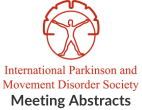The Genetic Basis of paediatric movement disorders: experience from the SYNaPS Study
Objective: To identify genetic causes of paediatric movement disorders in a large multi-ethnic cohort of patients by genetic investigations. Background: Pediatric movement disorders which are…Ataxin-2 gene in the Cuban population: Mutagenesis and epigenetic DNA methylation disease influencing phenotype
Objective: To characterize genetics and epigenetics factors contributing to the origin and accounting to the Cuban SCA2 phenotype variability. Background: CAG repeat expansions in ATXN2…Novel p.Pro193Arg missense mutation in ABCD1-gene associated with phenotype of ALD/AMN: a case report
Objective: To describe a novel mutation p.Pro193Arg of the ABCD1-Gene in a patient presenting with clinical phenotype of Adrenomyeloneuropathy (AMN). Background: Adrenoleukodystrophy comprises progressive neurologic…Cerebellar Ataxia case series study from southern Spain: Clinical and molecular description
Objective: Describe clinical features of a Cerebellar Ataxia non-Friedreich case series from southern Spain, and their molecular diagnosis. Background: Cerebellar Ataxias are a highly heterogeneous…Comorbid Pediatric Early Onset Ataxia and Dystonia – Is the Cerebellum Involved?
Objective: In children with Early Onset Ataxia (EOA), we aimed to determine the prevalence of comorbid dystonia and to explore the pathogenesis by the shared…A strategic approach to understand microsatellite repeat loci among Indian spinocerebellar ataxia patients
Objective: To identify novel unstable tandem nucleotide repeat loci in uncharacterized ataxia patients. Background: Microsatellites like tandem nucleotide repeats are of importance to human genome…Antisense FMR1 splice variant: A predictor of fragile X-associated tremor/ataxia syndrome
Objective: To determine the role of a splice variant of the antisense fragile X mental retardation 1 (ASFMR1) gene, loss of FMR1 AGG interspersions and…Genotype-phenotype correlations in 104 Uzbekish families with Spinocerebellar ataxias
Objective: Spinocerebellar ataxias are neurodegenerative disorders involving the cerebellum and its connections. There are more than 30 distinct subtypes, 16 of which are associated with…Chorea and Ataxia as Manifestations of Xeroderma Pigmentosum: A Case Report
Objective: To report a case of a 51-year-old woman with recurrent basal cell carcinoma, severe photosensitivity, and progressive chorea and ataxia caused by xeroderma pigmentosum…Multi-tiered Diagnostic Approaches Reveal a High Degree of Genetic Heterogeneity for Hereditary Cerebellar Ataxias: A Retrospective Review of an Australian Cohort
Objective: A retrospective review of the genetic spectrum in an Australian cohort of hereditary cerebellar ataxia (HCA), as well as evaluating HCA’s testing modalities at…
- « Previous Page
- 1
- …
- 19
- 20
- 21
- 22
- 23
- …
- 28
- Next Page »
